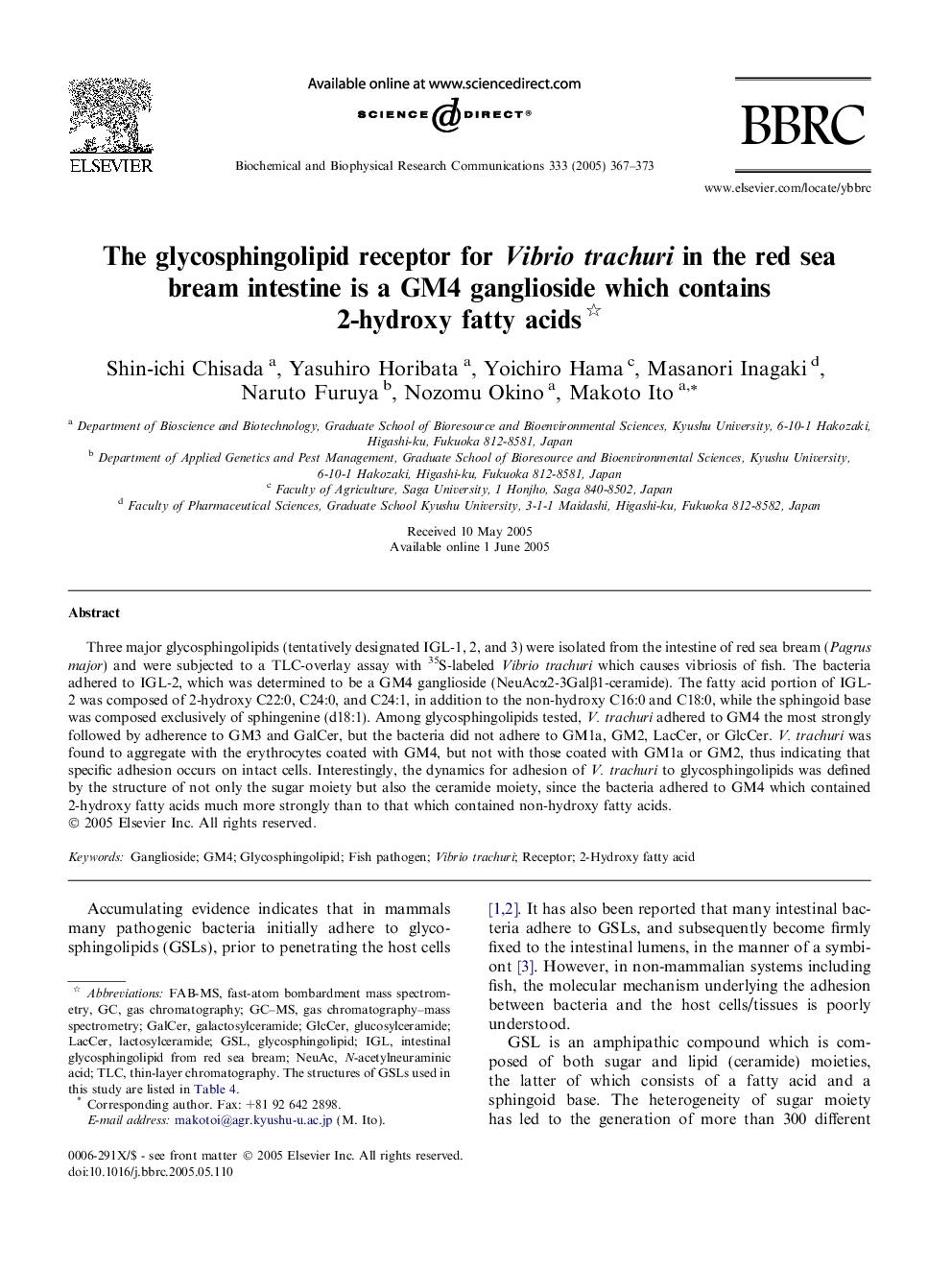| Article ID | Journal | Published Year | Pages | File Type |
|---|---|---|---|---|
| 10770053 | Biochemical and Biophysical Research Communications | 2005 | 7 Pages |
Abstract
Three major glycosphingolipids (tentatively designated IGL-1, 2, and 3) were isolated from the intestine of red sea bream (Pagrus major) and were subjected to a TLC-overlay assay with 35S-labeled Vibrio trachuri which causes vibriosis of fish. The bacteria adhered to IGL-2, which was determined to be a GM4 ganglioside (NeuAcα2-3Galβ1-ceramide). The fatty acid portion of IGL-2 was composed of 2-hydroxy C22:0, C24:0, and C24:1, in addition to the non-hydroxy C16:0 and C18:0, while the sphingoid base was composed exclusively of sphingenine (d18:1). Among glycosphingolipids tested, V. trachuri adhered to GM4 the most strongly followed by adherence to GM3 and GalCer, but the bacteria did not adhere to GM1a, GM2, LacCer, or GlcCer. V. trachuri was found to aggregate with the erythrocytes coated with GM4, but not with those coated with GM1a or GM2, thus indicating that specific adhesion occurs on intact cells. Interestingly, the dynamics for adhesion of V. trachuri to glycosphingolipids was defined by the structure of not only the sugar moiety but also the ceramide moiety, since the bacteria adhered to GM4 which contained 2-hydroxy fatty acids much more strongly than to that which contained non-hydroxy fatty acids.
Related Topics
Life Sciences
Biochemistry, Genetics and Molecular Biology
Biochemistry
Authors
Shin-ichi Chisada, Yasuhiro Horibata, Yoichiro Hama, Masanori Inagaki, Naruto Furuya, Nozomu Okino, Makoto Ito,
